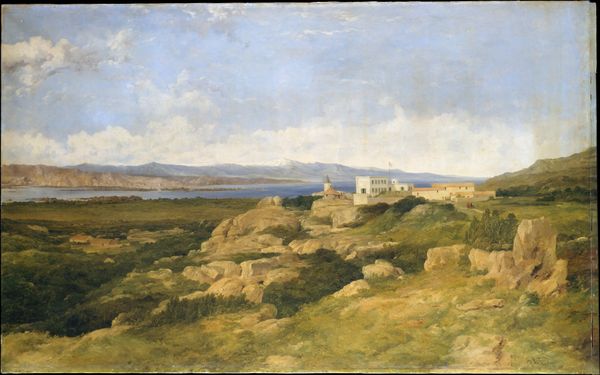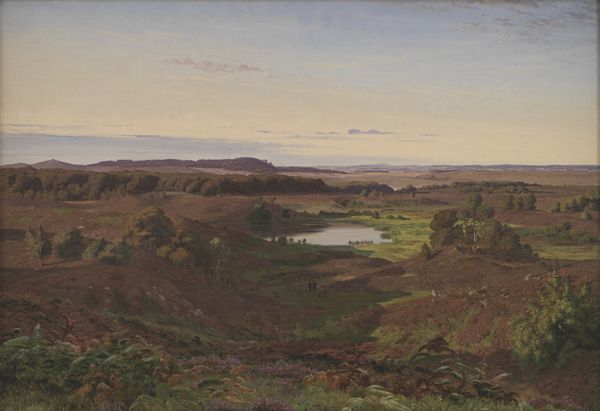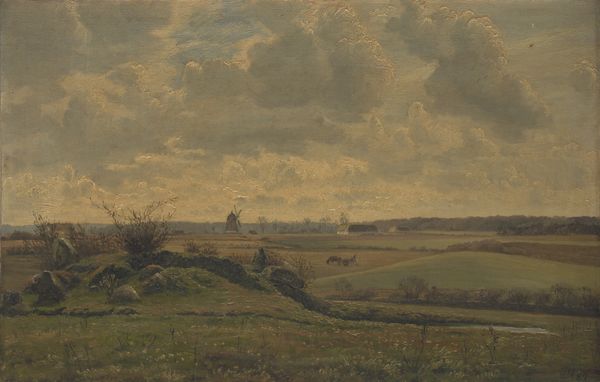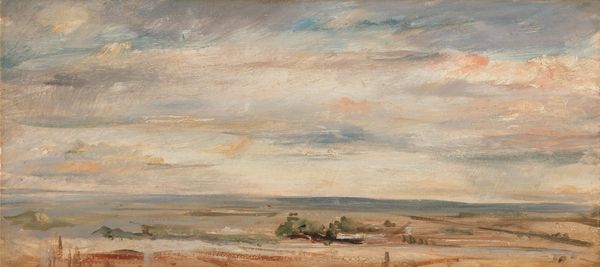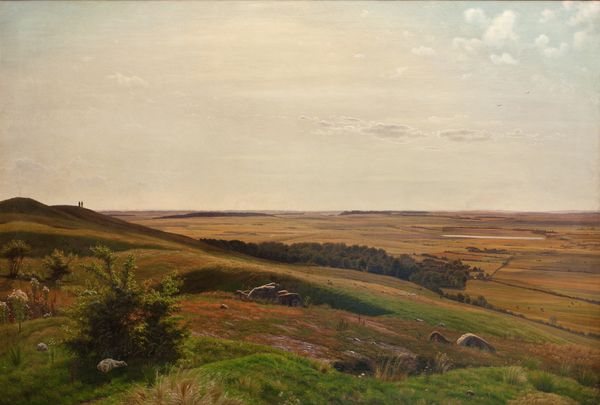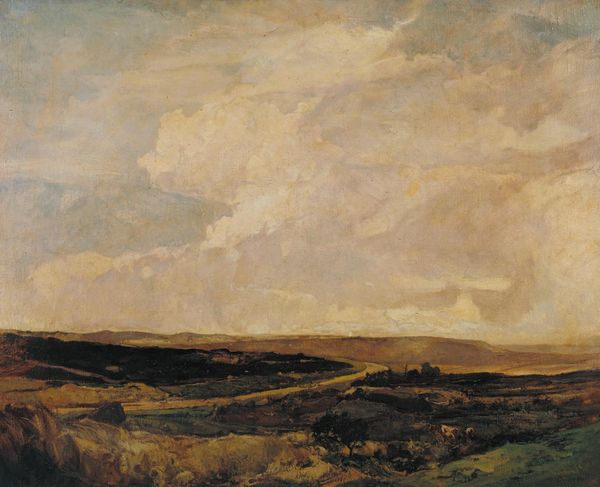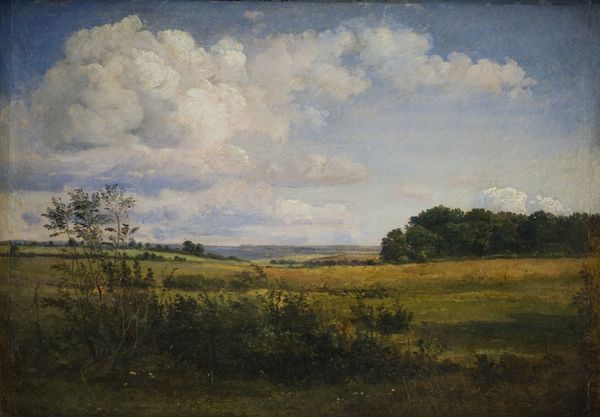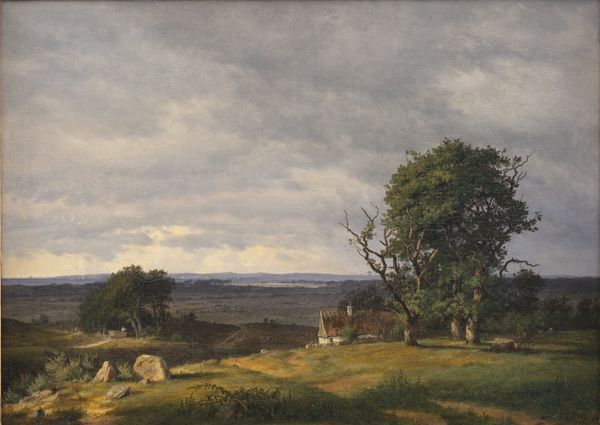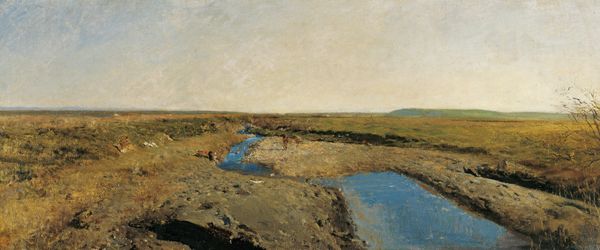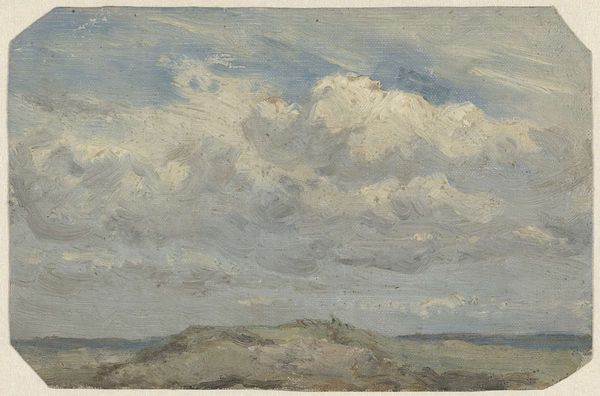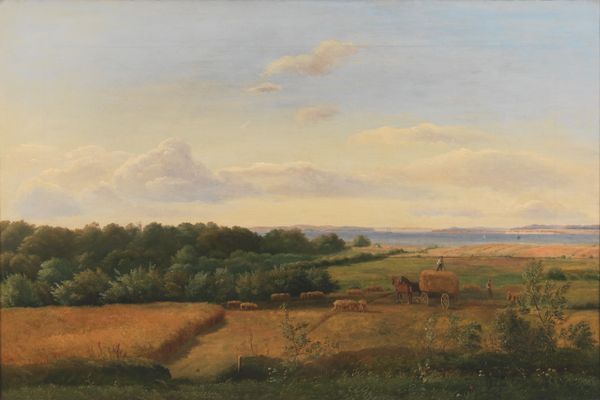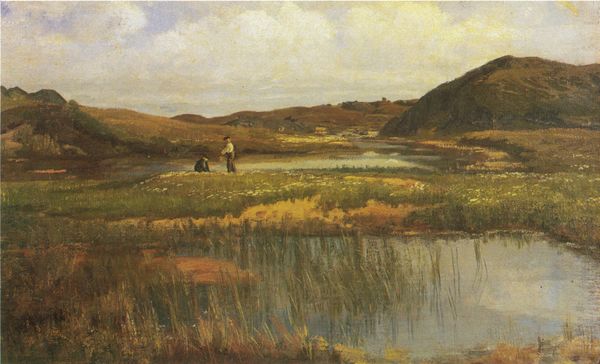
painting, plein-air, oil-paint
#
painting
#
plein-air
#
oil-paint
#
landscape
#
oil painting
#
romanticism
#
realism
Dimensions: 29.5 cm (height) x 40 cm (width) (Netto), 50.8 cm (width) x 40.3 cm (height) x 4.9 cm (depth) (Brutto)
Editor: Here we have Dankvart Dreyer’s “A Landscape, Tørring, Jutland” painted in 1843. It's an oil on canvas, and what strikes me immediately is how the landscape feels almost secondary to the depiction of the clouds. What’s your interpretation of this work? Curator: Focusing on the materiality, I see a landscape rendered with specific attention to the physical properties of the oil paint. The visible brushstrokes are not just representational; they highlight the very act of creation, the labor involved. Dreyer was working "en plein air", directly confronting the conditions of his working environment. How does this inform the reception of landscape painting at the time? Editor: I suppose it makes the experience more immediate, less idealized than studio painting. But how does that fit into a broader social context? Curator: Consider the historical backdrop. 1843, a time of shifting social structures and early industrialization. This landscape isn't some grand, romantic vista of untouched nature. The raw materials used in creating the artwork mirrors the raw, often-difficult landscape, and perhaps evokes the economic realities tied to it. The labor required to produce a canvas, grind pigments, all connects to a larger system of production and consumption. Does this perspective shift your understanding of Dreyer’s choice of subject? Editor: It does! It's easy to overlook the economic factors influencing artistic choices. I was initially caught up in the visual drama, but it’s interesting to consider the role of labour and materiality. Curator: Exactly. By examining the material reality of its creation, we can reveal its connection to social and economic realities, moving beyond mere aesthetics. Editor: This has opened my eyes to a whole new level of interpretation, thank you! Curator: Indeed, the more we look at the “how” and “why” behind the materials used, the more multifaceted the artwork becomes.
Comments
No comments
Be the first to comment and join the conversation on the ultimate creative platform.
